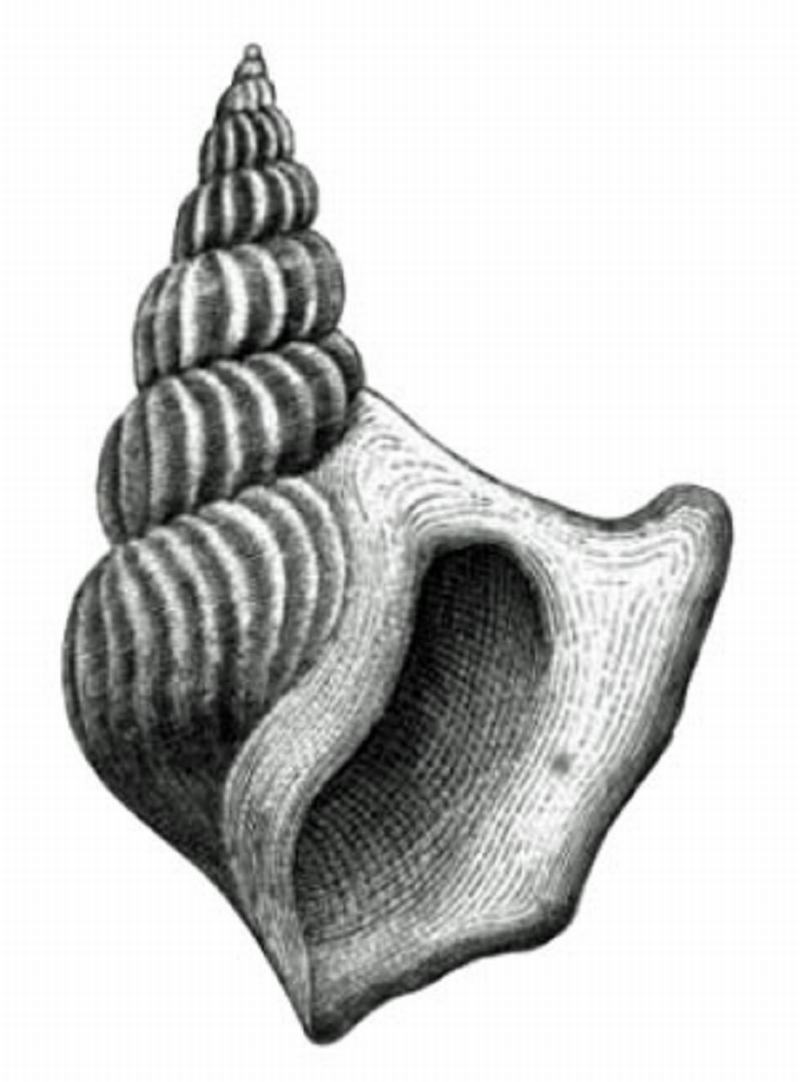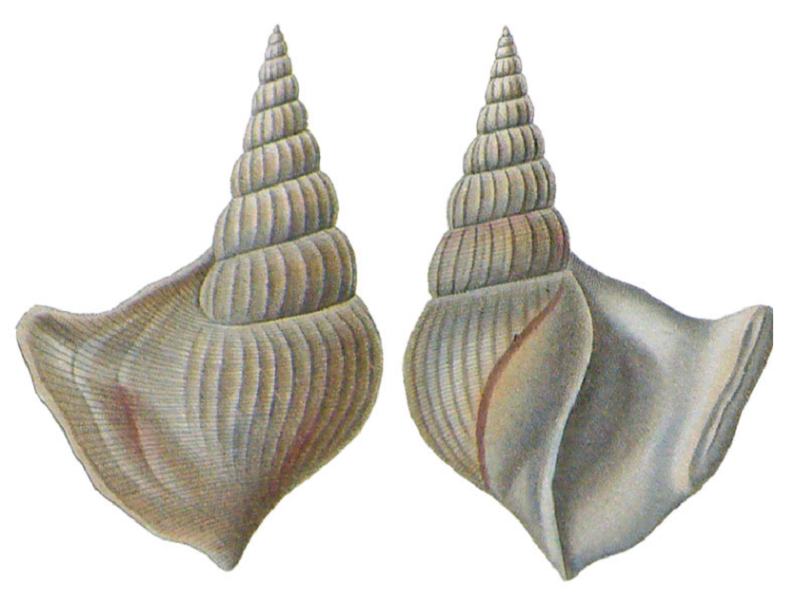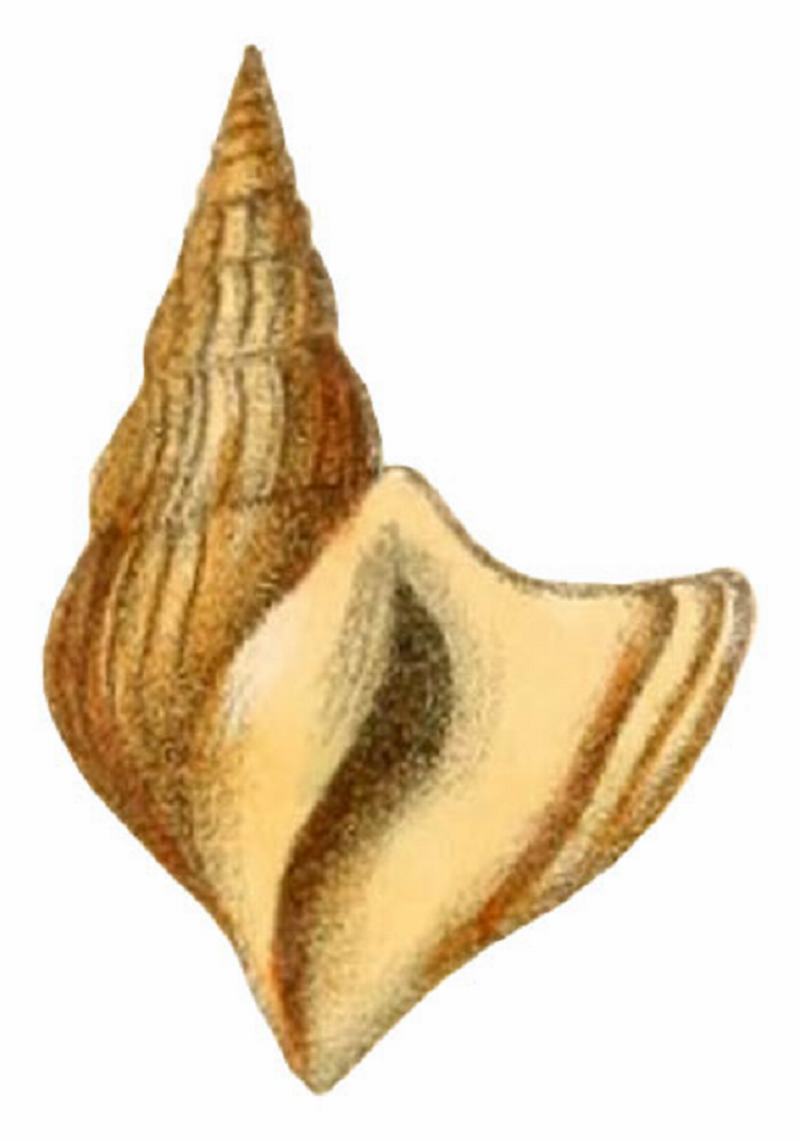
Clio supplemento a Argonauta n. 1-6 2012
 |
 |
History and Synonymy
· Syn.: Aporrhais occidentalis labradorensis Johnson, 1930: 133
· Syn.: Aporrhais occidentalis mainensis Johnson, 1926: 3, pl. 1, fig. 2,3
· Syn.: Arrhoges occidentale Orlov, 1960 : 191 [incorrect subsequent spelling]
· Syn.: Chenopus occideutalis Beck, 1847. Orlov, 1960: 189 [incorrect subsequent spelling]
· Syn.: Drepanocheilus (Arrhoges) occidentale Beck, 1836. Wenz, 1938 : 912, pl. 2680
1841

Rostellaria occidentalis in Gould, 1841, fig. 205
· Gould, 1841 did not know the animal.
· Because of its simple expansion, Gould, 1841 placed it close to Hippochrenes macroptera, the shell seemed to him close to Aporrhais pespelecani
Comment Johnson, 1926, p. 134: "The figure by Gould represents this variety [A.o. mainensis]. It was found by Mr. Bryant 20 miles E.S.E. of Cape Sable, N. S., in 70 fms."
Comment Johnson, (1930), p. 3: "The figure by Gould represents the typical form [of Arrhoges occidentalis] and not this variety [A.o. mainensis] as stated in 1926."
1842

Aporrhais occidentalis in Sowerby, 1842, pl. V, fig. 2
1843

Rostellaria occidentalis in Kiener, 1843, pl. ?, fig. 4
1851

Rostellaria occidentalis in Reeve, 1851, Rostellaria, pl. 2, fig. 6 a, b
· "Image courtesy Biodiversity Heritage Library. http://www.biodiversitylibrary.org"
1863
Packard, 1863:· p.421: "...Invertebrata collected at Anticosti and Mingan Islands, by Messr. A.E. Verrill, A. Hyatt, and N.S. Shaler, in 1861 ... (p. 423) ... Aporrhais occidentalis Beck. ..."
· p. 426: "Aporrhais occidentalis occured very rarely at Gaspé, as it does on the coast of Maine."
· p. 427: "... and the following species are characteristic of Labrador and the Banks of Newfoundland: ... Aporrhais occidentalis ..."
· p. 428: "Thus with our present knowledge we can approximate very nearly to the southern limits of this shoal fauna, and trace the isolated patches situated upon the cold and unprotected elevations, which rise in the warmer seas of New England; but our imperfect information respecting the range northward of its most characteristic species, does not allow us to speak with much certainty how far up the eastern coast of Labrador these species extend, or whether those few species, which reach Greenland and occur there rarely, may not be considered as foreigners to the soil. For example: of Apporhais occidentalis, which is so profusely abundant in the Straits of Belle Isle, Mörch reports but a fragment from Greenland."
1874

Aporrhais occidentalis in Tryon, 1873, pl. 10, fig. 125
· "Image courtesy Biodiversity Heritage Librar
1926
Original description of Aporrhais occidentalis mainensis n.var. by Johnson, 1926, p. 133:"The specimens from Gulf of Maine and Bay of Fundy differ from the typical form from the Gulf of St. Lawrence northward, in having fewer and more elevated longitudinal costae. The type calls for 25 costae, while those from the Gulf of Maine have only 14 on the penultimate whorl, the number being quite constant, while those from Labrador have from 22 to 25 costae. In the Gulf of Maine specimen the costae in the young end abruptly at the periphery and the peripheral line is noticable on the entire body whorl to the tip of the wing-like lip, there is also a slight sub-peripheral line; both of these are obsolete or wanting in the more northern specimens."
Comment Johnson, 1926, p. 134: "The variety is based chiefly on a large series dredged by Dr. C.W. Townsend in from 5 to 6 fms. near the Gillpatrick Ledge off Northeast Harbor, Maine."
1930
Johnson, (1930) about Aporrhais occidentalis var mainensis:· "The length of the type (fig. 5) is 62 mm. The type lot was dredged by Dr. C. W. Townsend near Gillpatrick Ledge, off Northeast Harbor, Maine, in 5 to 6 fathoms"
Original Description of Aporrhais occidentalis var. labradorensis n. var. by Johnson, 1930, p. 3:
· "This is readily separated from the typical form by its smaller size, more slender spire, smaller and more numerous costae and less expanded lip. On the penultimate whorl there are about 24 longitudinal costae and on the body whorl about 29, peripheral lines obsolete or wanting. Width of the lip 15 mm. The lip is confined to the body whorl, usually not reaching the suture and rarely extending onto the penultimate whorl. The length of the holotype (fig. 3) is 52 mm. and of fig. 2, representing an unusually high spire. 63 mm. Holotype and paratypes are from Egg Harbor, Labrador, 7 fathoms (Owen Bryant). Most of the specimens from the Labrador coast are badly eroded."
Note:
Synonyms courtesy www.stromboidea.de – by U. Wieneke, H. Stoutjesdijk & P. Simonet.
